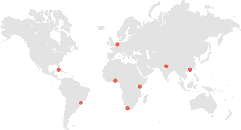A second three-day design workshop with Dutch and Chinese professionals in mobility, strategic urban planning, economics and landscape development will take place in Guangming New Town on June 18-20. Other participants will be representatives from the Guangming New Town Office and domestic well-known enterprises such as China Merchants Group, Zhaoshang, Huaqiang and Xunteng. The workshop will consist of an extensive site visit, small group sessions according to the themes of the workshop, plenary presentations and a final presentation to the local government and Annemarie Jorritsma, Mayor of Almere. The workshop is organized by INTI and the Shenzhen Center for Design and generously supported by the City of Almere.
OBJECTIVE
Low carbon is supposed to be the common factor of the urban development in Guangming New Town. However, the current plan of the Gateway Area is totally car-driven instead. We all know that intensive private car dependency has resulted in traffic congestion, air pollution and segregated cities worldwide. It means the current urban plan weakens a sustainable development and it therefore doesn’t support the full economic potential of the location. What is needed instead, in order to attract future business and inhabitants, is a new and ambitious design strategy for further developing the Gateway Area into a showcase for sustainable concepts.
Cities are shifting from ‘grey to green’ approaches to developing and renewing their infrastructure. Green infrastructure involves the use of living systems such as green roofs and walls, urban forests, wetlands, porous paving systems and rain gardens as well as supportive technologies such as engineered soils and water storage and transportation systems. Green infrastructure is often cheaper and more durable than traditional civil engineering solutions.
In order to avoid private car dependency and to reduce the environmental impact of road infrastructure construction, alternative or new proposals are necessary in the early development phase of the Gateway Area. We should therefore think about implementing an integrated green system for transportation, landscape and water. This new vision will be further explored in two specific sites in the area, which automatically will become showcases of new sustainable concepts:
1. Further development of the railway station and direct surroundings
2. Further development of the site of Huaqiang enterprise
DUTCH PARTICIPANTS
- Harry Zondag (Strategic Advisor Spatial Planning – City of Almere)
- Hester Kersten (Landscape Architect – City of Almere)
- Hans Maassen (Program Manager Infrastructure – City of Almere)
- Ronald Wall (Economic Geographer – Institute for Housing and Urban Development Studies)
- Leo Versteijlen (Project developer and director, co-founder and co-owner of SITE Urban Development)
- Gerard Maccreanor (Founding director MLA+ Architecture, Urbanism & Related Thinking)
- Arnold Reijndorp (Professor of Socio-economic and Spatial Developments of New Urban Areas)
- Tiffany Tsui (Royal HaskoningDHV – Director strategic business and sustainable development region China)


